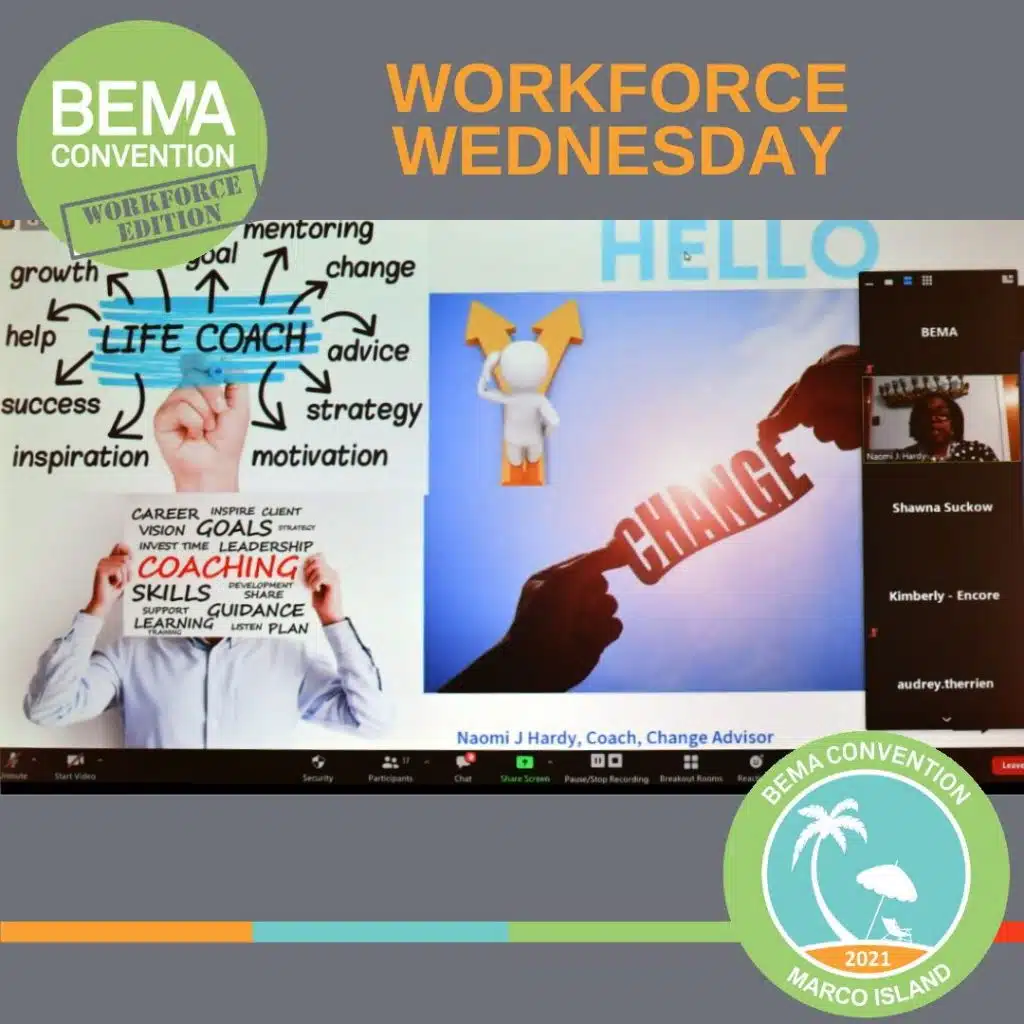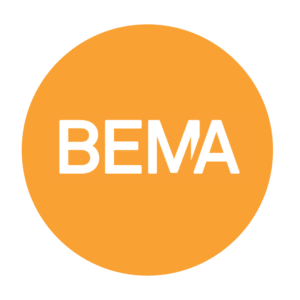07 Jul BEMA Convention 2021: Workforce Wednesday Recap
The new Workforce Wednesday edition kicked off BEMA’s Convention 2021 on Wednesday, June 23. The inaugural event combined the networking of Convention with the education of BEMA-U.
New in 2021, BEMA designed the virtual edition to enable industry members to address pressing workforce-relevant topics such as designing for better efficiency and sanitation, navigating change in the workplace, and presenting oneself and one’s company in a way that acknowledges the far-reaching impacts of the pandemic in preparation for the future ahead.

![]()
Session 1 – Overall Risk Assessment Tutorial
Presenter Karl Thorson, General Mills, offered Workforce Wednesday attendees a high-level view of the Overall Risk Assessment (ORA) tool. Created by members of the Baking Industry Forum (BIF), the ORA is a proven risk assessment tool that’s finding use as a teaching method for those new to risk assessment protocols in the industry, in addition to use with customers working through the risk assessment process.
Karl shared that growing complexity within the baking and equipment environment is leading to less control and more vulnerability to risk. This includes mismatches between equipment designs and cleaning methods that demand increased cleaning and changeover time, particularly in older systems not designed for wet or dry cleaning.
The ORA can help mitigate those risks, providing a checklist of important questions and a forum for collaboration and future-forward thinking. Building in the practice of question asking and soliciting for inputs up-front from a cross-function team challenges the status quo and can assist in creating a metric that drives down risk and reduces cleaning and changeover time. By minimizing the complexity of individual processes, users can build clear success criteria to match equipment and plant design with the right cleaning and sanitation methods.
The ORA tool also encourages cross-functional teams to ask the important questions of why we are cleaning and how are we cleaning. By working together, ORA users can identify potential mismatches to design for optimized cleaning, maintenance and inspection, minimize risk, and create a positive ripple effect for all those working to meet food safety goals.
![]()
Session 2 – Savvy Social Media Workshop
Comparing the last 15 months to changes experienced in the 1920s, Shawna Suckow shared ways to make the most of the upheavals of change. Acknowledging that we are all working, shopping and dressing differently, she emphasized the importance of relating to our peers and our customers on a more casual, personalized level.
First impressions remain critical, and this includes demonstrating a more authentic personal side that’s neither too slick or sales driven. For many, that first impression of a company is the profile of an employee on LinkedIn. As the company’s first impression, a LinkedIn profile offers a way to demonstrate why you are likeable and trustworthy, something that’s particularly important for younger consumers and customers.
To build a more humanized and likeable LinkedIn profile, Shawna recommended using the power of photos and unique headlines. This helps to create a profile that’s memorable and a platform for thought leadership. Additional engagement suggestions include increasing postings from 10-30 times per month, including an image with all posts, and posting using tags and hashtags to connect with others sharing similar information. This formula can facilitate engagement with industry influencers and with responders.
She cautioned to avoid using generic connection requests, instead looking for ways to genuinely engage to break through the noise. This includes using LinkedIn tools to upload brochures and videos to showcase experiences, customer interviews and thought leadership moments.
![]()
Session 3 – Insights Discovery Introductions to YOU
As the world and the workforce continue to evolve, many are looking for tools to better understand themselves and their colleagues in order to create more productive, respectful and positive working relationships. The Insights Discovery system of self-awareness training offers instruction on how to clarify your perception of the world, understand one’s own and others’ communication preferences, and how to improve collaborations for better connections.
The Insights Discovery system provides a common language to help overcome challenges and conflict by breaking down the Ladder of Perception. The Ladder is a series of rungs, or steps, of understanding. The rungs move from an event as a camera would catch it before moving to perceptions made based on selected data, making value judgements that lead to interpretations and meanings given – leading to logical conclusions, emotional and physical responses and the forming of beliefs.
Each Insights Discovery profile is a combination of the traits of Cool Blue, Earthy Green, Sunshine Yellow or Fiery Red color energy. Yellow: Involve Me! Green: Show me you care! Blue: Give me the details. Red: Be Brief, Be Bright, Be Gone! The tool then categorizes these traits into subsets of a Reformer, Director, Motivator, Inspirer, Helper, Supporter, Coordinator or Observer.
Insights Discovery is also available for organizations through BEMA-U, facilitated by Emily Bowers.
![]()
Session 4 – Workforce Forecast
In a changing world, those who are prepared will to pivot will be uniquely positioned to get ahead of the many workplace changes ahead. Presenter Naomi Hardy, Dunamis Transition Solutions, shared the importance of innovation and embracing change when transitioning from a manager to a leader.
By employing inspiration and not control to influence others, change can be realized. This strategic focus motivates employees to drive change themselves, creating infinite awards for all involved. To accomplish this, leaders must shift away from the dynamics of power and control, using influence to accomplish a more cohesive and coherent direction within an organization.
Such leaders are better able to cope with change, challenge the status quo and ask the long-range questions while remaining focused on the people in the organization. Viewing people as capital empowers each individual to communicate and probe the ‘why’ questions to deliver upon the vision of the future. The ability to make these changes will offer greater visibility to HR and will also could highlight issues of diversity, equity and inclusion.
This P.I.V.O.T. in thinking allows individuals permission to move from manager to leader using intelligence that embraces the values of the organization and to overcome obstacles through both smooth and troubled times.





No Comments